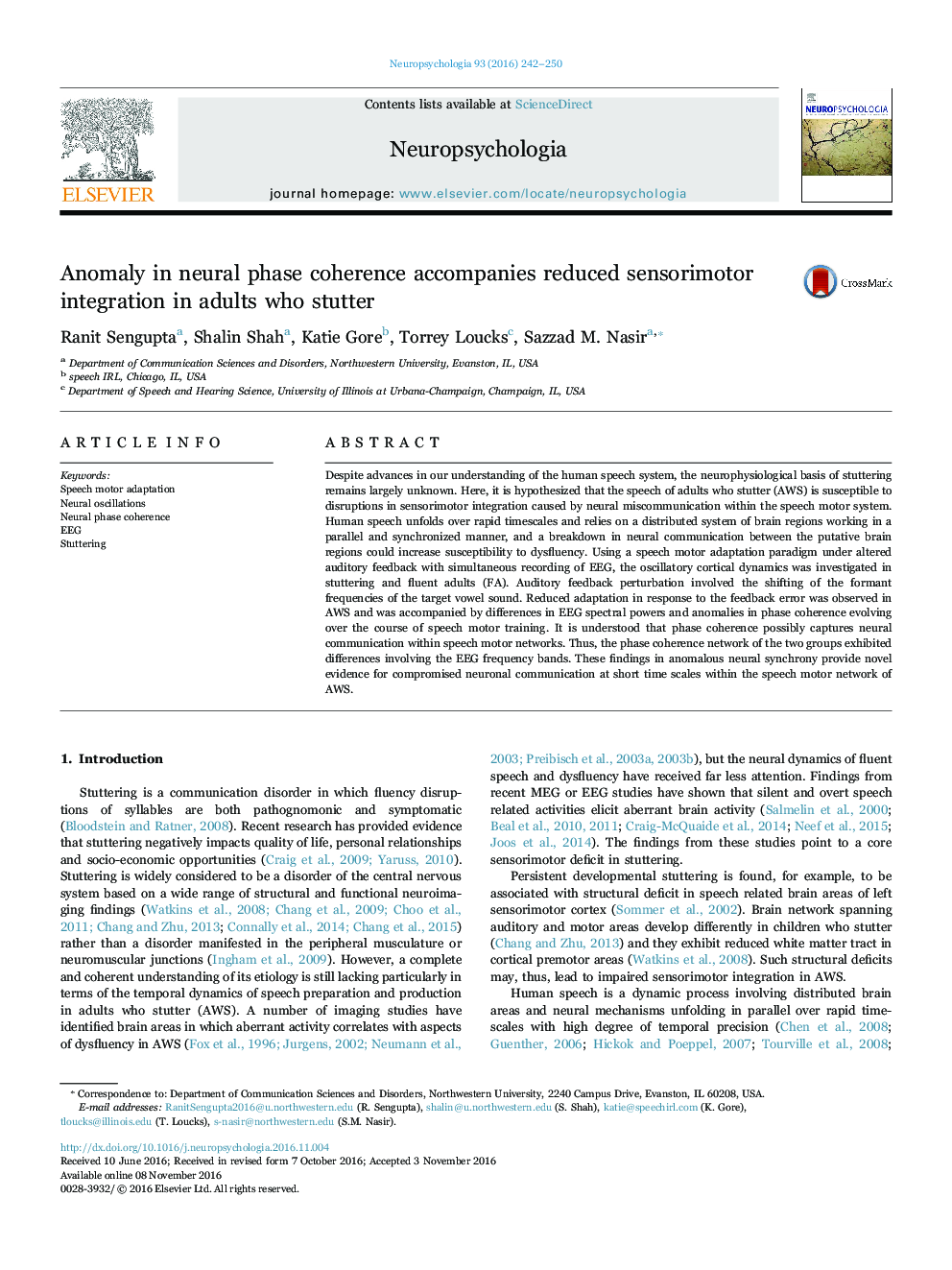| Article ID | Journal | Published Year | Pages | File Type |
|---|---|---|---|---|
| 5045331 | Neuropsychologia | 2016 | 9 Pages |
â¢Reduced sensorimotor adaptation in adults who stutter.â¢Aberrant neural oscillatory patterns are observed in AWS.â¢Neural miscommunication within speech motor network is possibly reflected by anomalous neural phase coherence in AWS.
Despite advances in our understanding of the human speech system, the neurophysiological basis of stuttering remains largely unknown. Here, it is hypothesized that the speech of adults who stutter (AWS) is susceptible to disruptions in sensorimotor integration caused by neural miscommunication within the speech motor system. Human speech unfolds over rapid timescales and relies on a distributed system of brain regions working in a parallel and synchronized manner, and a breakdown in neural communication between the putative brain regions could increase susceptibility to dysfluency. Using a speech motor adaptation paradigm under altered auditory feedback with simultaneous recording of EEG, the oscillatory cortical dynamics was investigated in stuttering and fluent adults (FA). Auditory feedback perturbation involved the shifting of the formant frequencies of the target vowel sound. Reduced adaptation in response to the feedback error was observed in AWS and was accompanied by differences in EEG spectral powers and anomalies in phase coherence evolving over the course of speech motor training. It is understood that phase coherence possibly captures neural communication within speech motor networks. Thus, the phase coherence network of the two groups exhibited differences involving the EEG frequency bands. These findings in anomalous neural synchrony provide novel evidence for compromised neuronal communication at short time scales within the speech motor network of AWS.
